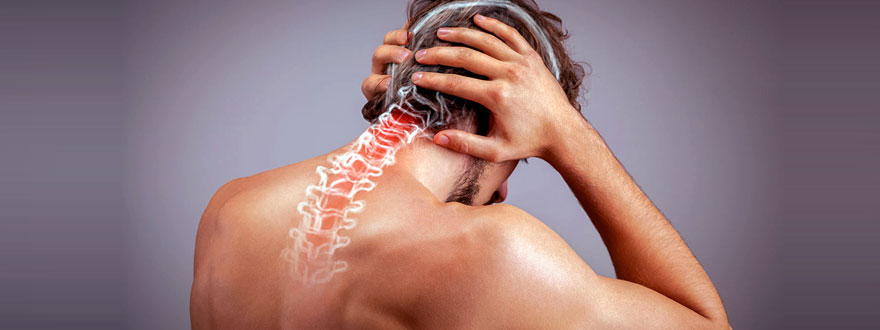Cervical Disc Prolapse

Cervical disc prolapse, also known as cervical disc herniation or cervical disc bulge, is a common condition affecting the spinal discs in the neck region (cervical spine). It occurs when the gel-like center (nucleus pulposus) of an intervertebral disc protrudes or ruptures through the tough outer layer (annulus fibrosus), leading to compression or irritation of nearby spinal nerves or the spinal cord itself.
Here's an overview of cervical disc prolapse:
- Anatomy of the Cervical Spine: The cervical spine consists of seven vertebrae (C1 to C7) separated by intervertebral discs. These discs act as cushions between the vertebrae, providing flexibility and shock absorption to the spine. Each disc has a tough outer layer called the annulus fibrosus and a gel-like inner core called the nucleus pulposus.
- Causes: Cervical disc prolapse can occur due to various factors, including:
- Degenerative disc disease: Age-related wear and tear on the spinal discs, leading to weakening and degeneration of the disc structure.
- Trauma or injury: Sudden impact or force to the neck region can cause disc herniation.
- Repetitive stress: Activities or occupations that involve repetitive movements or heavy lifting can increase the risk of disc prolapse.
- Poor posture: Prolonged sitting, improper lifting techniques, or poor ergonomics can contribute to spinal disc degeneration and herniation.
- Symptoms: The symptoms of cervical disc prolapse vary depending on the location and severity of the herniated disc and the degree of nerve or spinal cord compression. Common symptoms may include:
- Neck pain or stiffness
- Pain that radiates into the shoulders, arms, hands, or fingers
- Numbness or tingling sensations in the arms or hands
- Weakness in the arms or hands
- Difficulty gripping objects or performing fine motor tasks
- Muscle spasms or weakness in the neck or upper back
- Changes in reflexes or coordination
- Prognosis: The prognosis for cervical disc prolapse varies depending on factors such as the severity of the herniation, the extent of nerve or spinal cord compression, and the effectiveness of treatment.


